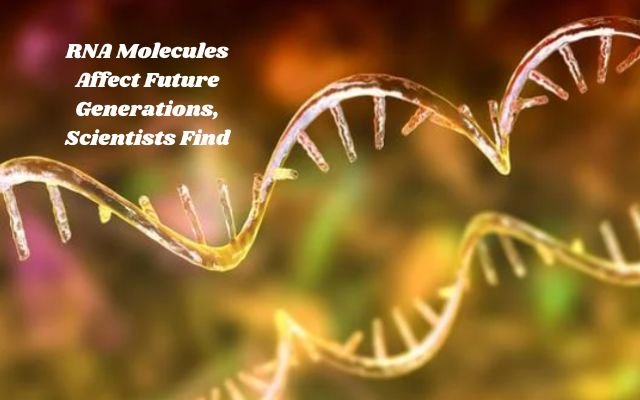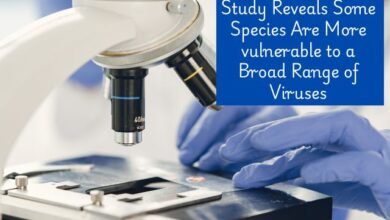RNA Molecules Affect Future Generations, Scientists Find
Discover how RNA Molecules Affect Future Generations and their potential for advancing RNA-based medicines and treating inherited diseases.

RNA-based medicines, such as double-stranded RNA (dsRNA) therapies and effective RNA vaccinations, present a potential approach to treating human illnesses. These therapies function by focusing on & inhibiting the genes that cause disease. Effectively delivering these RNA molecules into cells is still very difficult, though. Researchers are also looking into how RNA Molecules Affect Future Generations, which may lead to new avenues for improving healthcare and curing inherited diseases.
A new study published on February 4, 2025, in the journal eLife could lead to advances in RNA-based drug development. Researchers from the University of Maryland used roundworms to study how dsRNA molecules enter cells and affect future generations. They found several ways for dsRNA to enter the worms’ cells, which could improve how drugs are delivered to humans.
“Our research changes what we thought we knew about RNA. We discovered that RNA may transmit information across generations as well as between cells, which opens up new possibilities for our understanding of inheritance.”
– Antony Jose, senior author and associate professor of cell biology and molecular genetics at UMD
Team discovered that a protein called SID-1, which helps control the transfer of RNA information, also affects gene regulation across generations. When they removed SID-1, the worms became better at passing gene changes to their offspring. These changes lasted for over 100 generations, even after SID-1 was put back in the worms.
“Interestingly, proteins like SID-1 are found in other animals, including humans,” said Jose. “Human medicine can benefit from better understanding of SID-1’s mechanism of action. Understanding how this protein regulates RNA transport between cells may help us develop more potent treatments for illnesses and perhaps influence the inheritance of some disorders.”
Team also found a gene called sdg-1 that helps control ‘jumping genes’—DNA sequences that move or copy themselves to different parts of a chromosome. While jumping genes can sometimes be helpful, they are more likely to cause problems and diseases. The researchers discovered that sdg-1 is part of a jumping gene and makes proteins that control these movements, creating a system that prevents harmful changes.
It’s amazing how these cellular processes keep things in balance, like a thermostat keeping a house at the right temperature,” said Jose. “The system needs to be flexible—allowing some ‘jumping’ of genes but preventing too much movement that could harm the organism.
Jose believes the team’s findings help us understand how animals control their genes and keep gene expression stable across generations. Studying these processes could lead to new treatments for inherited diseases in humans.
Team plans to explore how different types of dsRNA are transported, where SID-1 is found and why some genes are regulated across generations while others aren’t.
“We’re just beginning,” said Jose. “What we’ve discovered is only the start of understanding how external RNA can create changes that last for generations. This research will help scientists improve RNA-based medicines.”
The study, “Intergenerational transport of double-stranded RNA in C. elegans can limit heritable epigenetic changes,” was published in the journal eLife on February 4, 2025.
Study was led by Antony Jose and Nathan Shugarts (Ph.D. ’21, biological sciences) with help from UMD researchers Aishwarya Sathya, Andrew Yi, Winnie Chan and Julia Marré.
- ISRO’s Ambitious Future: Chandrayaan-4, Gaganyaan, Shukrayaan
- Sunita Williams Returns to Spacewalks After 12 Years
- Unraveling the Mysteries of Antimatter
FAQ on RNA Molecules Affect Future Generations
What are RNA-based medicines and how do they work?
RNA-based medicines, like dsRNA therapies and RNA vaccines, target and stop genes that cause diseases by delivering RNA into cells. This helps treat illnesses by changing how genes work.
How do researchers study RNA’s impact on future generations?
To find out how RNA molecules, such as dsRNA, enter cells and impact the genes of subsequent generations, researchers employ roundworms. This clarifies how RNA may transmit modifications from one generation to the next.
What does the protein SID-1 do?
Moving RNA between cells is aided by SID-1. According to the study, it also aids in gene regulation between generations. Worms could more readily pass on gene alterations to their progeny in the absence of SID-1.
What is the sdg-1 gene in this study?
The sdg-1 gene controls ‘jumping genes,’ which are DNA pieces that move around. It helps prevent jumping genes from causing problems by keeping them in check.
What’s next in this research?
Team plans to study how different types of dsRNA are transported and why some genes change across generations. This could lead to better RNA treatments for inherited diseases.



